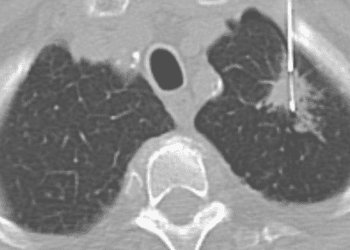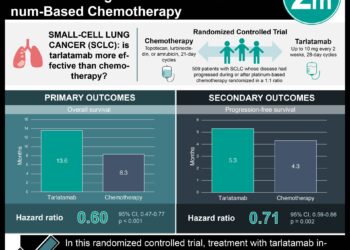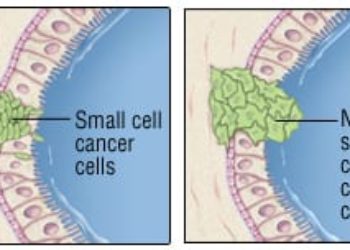Life-gained-based selection for cancer screening may result in superior health outcomes compared to risk-based selection
1. In this modelling study, life-gained-based selection of smokers for lung cancer screening resulted in a nearly threefold greater gain in life expectancy per lung cancer death averted compared to risk-based selection but prevented fewer lung cancer deaths overall.
2. While risk-based selection for screening had the potential to prevent more lung cancer deaths than screening according to U.S. Preventive Services Task Force (USPSTF) guidelines, adopting a life-gained-based framework may maximize population benefits without compromising effectiveness and efficiency.
Evidence Rating Level: 2 (Good)
Study Rundown: While screening programs offer unequivocal benefit in reducing cancer mortality, the associated emotional, temporal, and financial tolls can drastically diminish their value, especially for low-risk patients. However, risk-based screening may not necessarily be an optimal solution as risk factors for cancer such as old age and comorbidities also double as risk factors for other causes of death. Thus, while decreases in cancer mortality may be observed, life expectancy is not guaranteed to follow suit. Conversely, life-gained-based screening emphasizes the metric of life-years gained, potentially at the expense of preventable cancer deaths. This modelling study aimed to compare these two selection strategies for lung cancer in U.S. ever-smokers . Findings demonstrated that, compared to screening according to USPSTF guidelines, both methods resulted in superior mortality and life expectancy outcomes with comparable efficiency. Of the two, life-gained-based selection showed a nearly threefold greater gain in life expectancy per lung cancer death averted while risk-based selection prevented significantly more lung cancer deaths. However, after controlling for the total number of patients screened, neither method was demonstrably superior to USPSTF recommendations on the basis of life-years gained per lung cancer death averted. Strengths of this study included a large cohort and extensive external validation. Limitations included omission of quality-of-life metrics and circumvention of real-world issues around patient compliance and data collection. The model was also not able to offer a definitive threshold for selection.
Click here to read the study in Annals of Internal Medicine
Click here to read an accompanying editorial in Annals of Internal Medicine
Relevant Reading: Risk-Targeted Lung Cancer Screening: A Cost-Effectiveness Analysis
In-Depth [prospective cohort]: This study utilized a predictive model of lung cancer representative of U.S. ever-smokers aged 40-84. Data were drawn from the National Health Interview Survey, and model validation was evaluated through calibration and discrimination. Outcomes for comparison included program sensitivity (percentage of screen-detectable lung cancer cases, lung cancer deaths, and life-years gained relative to screening of entire population), benefit (deaths averted and life-years gained), harms (false positives), and efficiency (number needed to screen to avert 1 death or gain 10 life-years). The majority of persons belonging to the highest Lung Cancer Death Risk Assessment Tool (LCDRAT) risk decile were screened with either life-gained-based (86%) or risk-based (100%) selection, while only 56.4% were screened according to USPSTF criteria. Additionally, all persons belonging in the 7 lowest LCDRAT risk deciles were excluded from the two selection strategies of interest, but 3% were selected by the USPSTF criteria. The population most affected by selection strategy was persons at moderate risk (deciles 8 and 9). Overall, life-gained-based selection was less discriminate, accepting 1.56 million more patients for screening compared to risk-based selection, and resulted in a significantly greater gain in life expectancy per lung cancer death averted (mean, 21.7 vs. 8.9). Patients selected by this strategy were more likely to be younger (mean, 59.5 vs. 75), women (47.7% vs. 33.7%), and have fewer comorbidities (mean, .75 vs 3.7).
Image: PD
©2019 2 Minute Medicine, Inc. All rights reserved. No works may be reproduced without expressed written consent from 2 Minute Medicine, Inc. Inquire about licensing here. No article should be construed as medical advice and is not intended as such by the authors or by 2 Minute Medicine, Inc.







